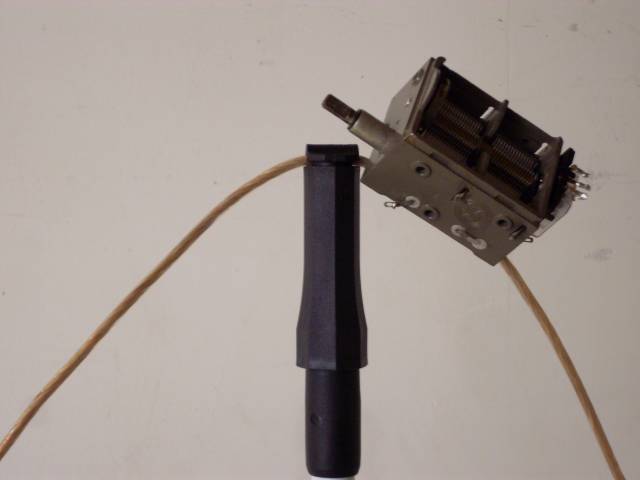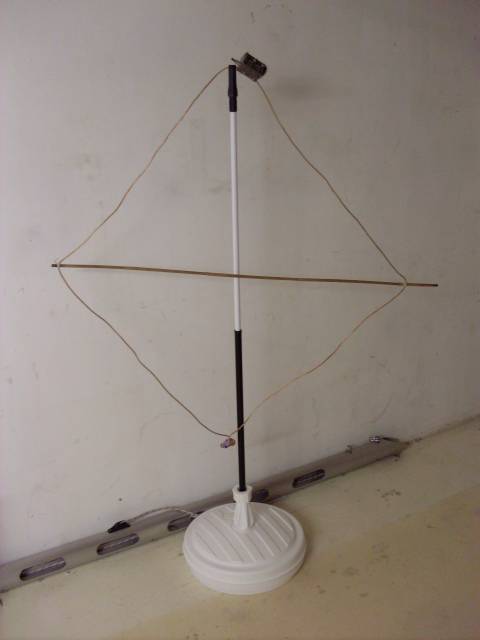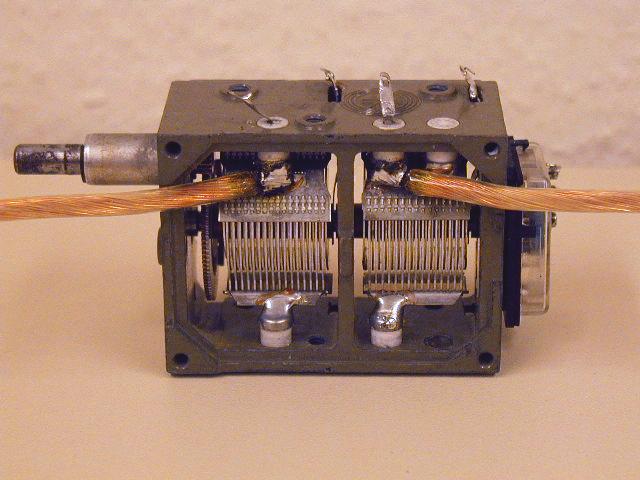Rockloop Antenna @dl1gsj
A magnetic loop made just of wire?
Years ago I started experimenting on magnetic loops & Co; I like the idea of narrow resonant aerials. When I saw the rockloop I never believed it might work (Ohmic resistance of the wire). Nowadays, travelling around a lot, I was looking for some antennas fitting my luggage. Again I found W9SCH's rockloop.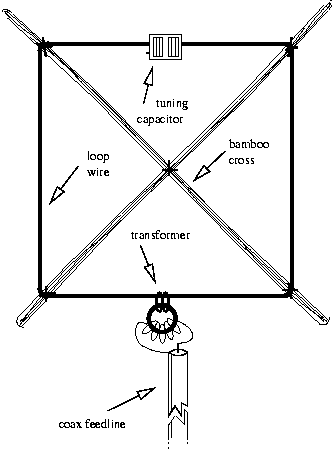
Thoughts to the original design
If I interpreted the original design correctly, the rockloop is constructed of a radiator wire, a transformer and a tuning capacitor. The transformer, as implied in G3YCC's description , seems to be made of a different (at least another) wire than the radiator. Following the calculations that can be done on magnetic loop antennas, one knows about the extremely low radiation resistance of these loops. This requires the total Ohmic resistances to be as low as possible. To gain the lowest possible Ohmic resistance, I decided to use a larger dimensioned toroid core to fit five windings of the radiator wire on it (no solder joints, lower losses).Materials
- about 4m insulated copper wire
- 2 bamboo pole 1.2m long
- toroid core of your choice
- variable capacitor
- bunch of cable ties
- insulated wire for the primary transformer winding
- BNC connector or coax cable (or both...)
Dimensions
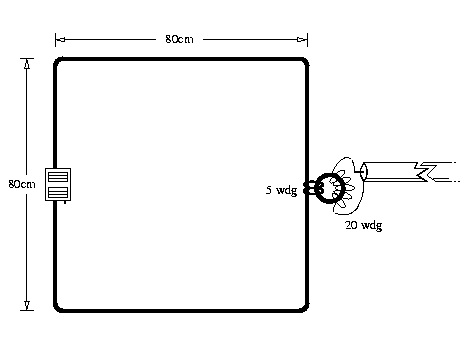
The four sides should have a length of 80cm, this will enable you to resonate the antenna up to the 15m band. If there are needs for the higher bands one should go for shorter sides. The transformation ratio was suggested by W9SCH. The 5 windings on the secondary side will influence the overall inductance of the loop...
Transformer
Everything is said already. Just have a look at the photograph. I have to admit, there certainly are better ways to mount the BNC connector...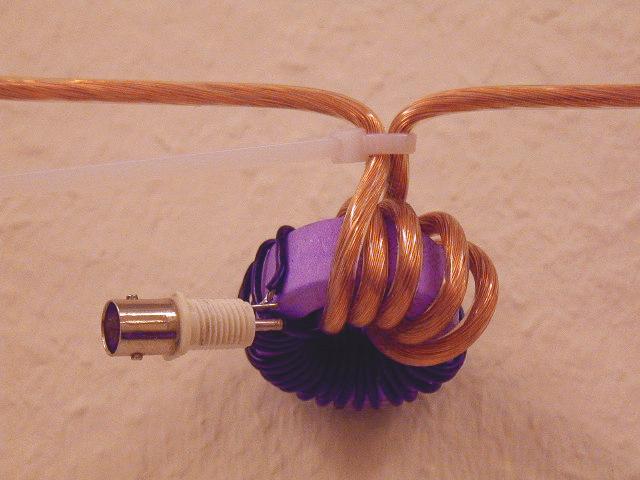
Tuning Capacitor
We are going QRP with this aerial anyhow. I found this one in a old BC-RX (my favourite source for these things). It helps if the capacitor has two identical sections. Feeding just the stators will on one hand leave the rotator and therefor the chassis w/o RF on the other it double the voltage rating. The solder joints should be as solid as possible (remember the resistance story). I used a 80W iron to solder the loop wire directly to the stators.Overall View
Showing pictures, it might be reasonable to show the whole thing. What I found helped, so there ist a shelf's backside steelcross used to give support for the bamboo rods. This will disappear soon... making place for some more cable ties. Please excuse the poor light quality on this one, was made on a business trip in the middle of the night.
Experience
The tuning range is huge. I observe resonance between 5 and 22MHz. Even though it tunes on the 40m band, I believe transmitting there might not make that much sense - radiation efficiency would not be that great. I used the lower range to listen to broadcast.First QSO on 20m during this business trip (Germany) resulted in a report of 579 from Hungary using 2W PSK31 (w/ FT817). At this time the antenna was hanging on a wardrobe (indoors, as you expect). The room was located at the ground floor of a steelwork office building.
Some news on my rockloop
I went out for some shopping, and that's the result (well, not the Al-boom on the floor):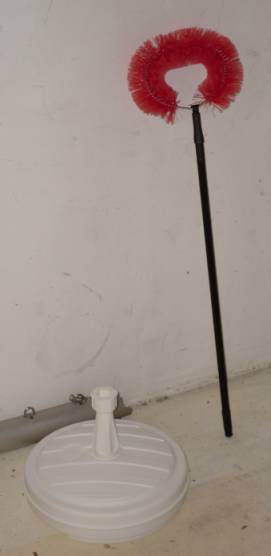
Thus, here's a very very cheap and easy solution. The sunshade stand cost me less than 4 Euros, the spider web broom was about 4 Euros.
Let's see what the mod is like. The broom itself can be easily separated from it's telescopic stick. Simply pull (carfully) on the steel bits. Twisting the stick slightely helps a lot. The result would be something like this:
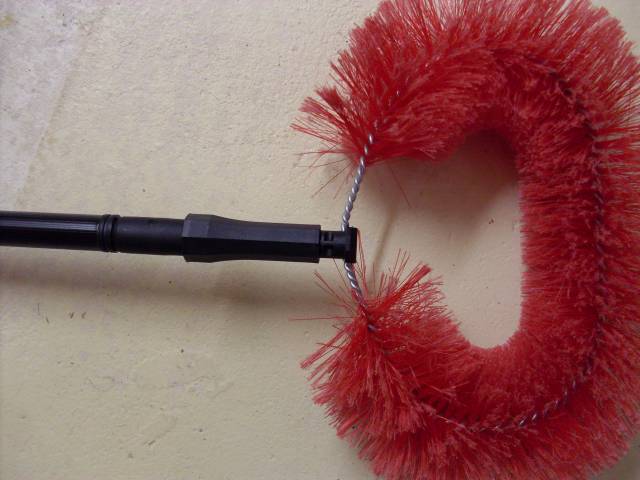
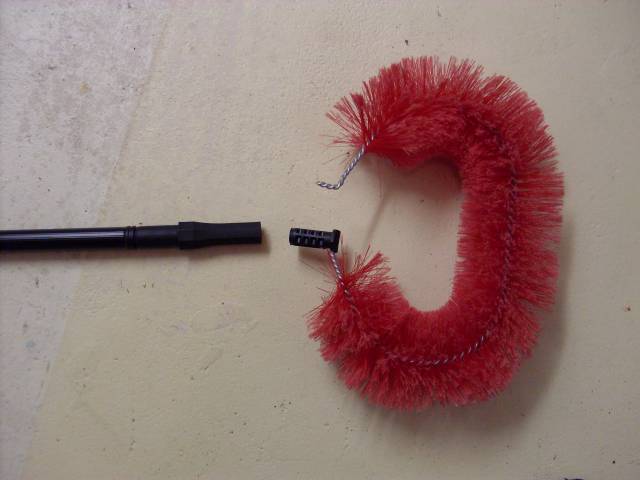
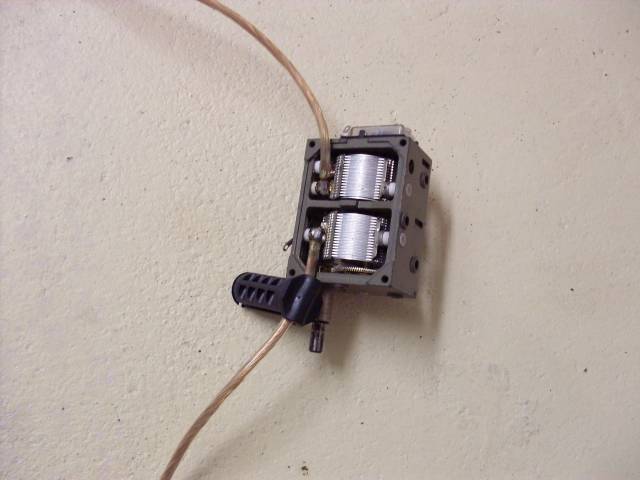
In the sequence of events, the plastic bit will mysteriously find it's way back home into the business end of the broomstick. As such:
